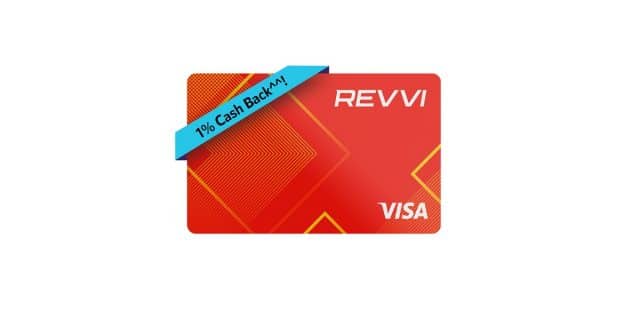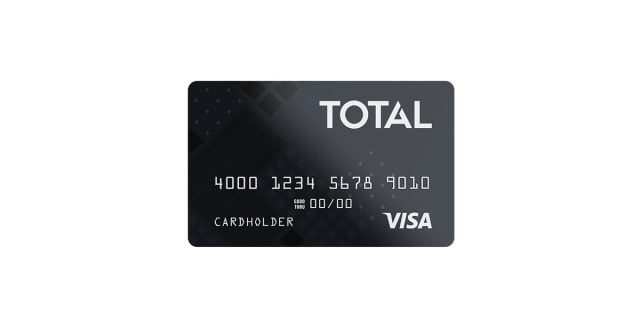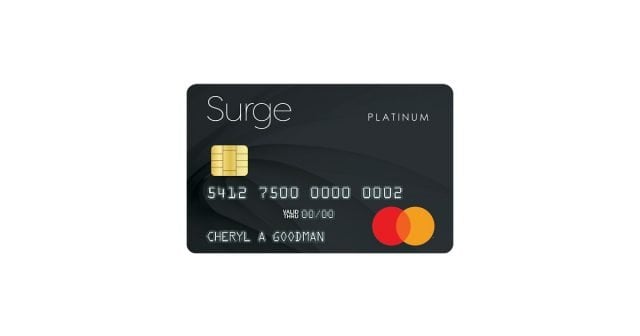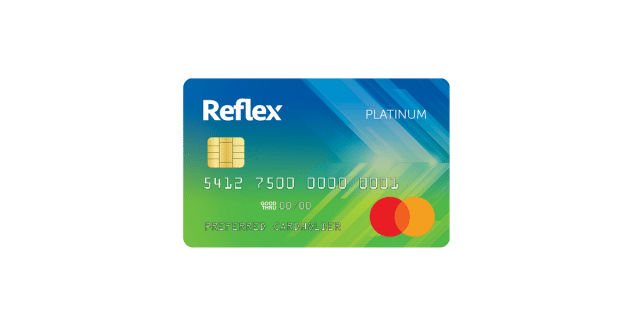by Cory Santos | Last updated on March 26th, 2024
Indigo® Mastercard® for Less than Perfect Credit
Indigo® Mastercard® for Less than Perfect Credit
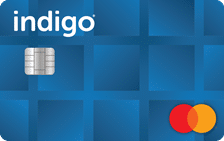
Indigo® Mastercard® for Less than Perfect Credit
- 35.9% Regular Purchase APR
- 35.9% Cash Advance APR
At a Glance
The Indigo Mastercard is rapidly becoming recognized as a top credit card option for applicants with less-than-perfect credit. It is a great resource for anyone who wants to establish, build, or repair their credit score. What’s more, benefits of the Indigo Mastercard include 24/7 mobile account access, chip card technology, and more.
- Best Benefits
- Rates & Fees
- Why Should You Apply?
- Great for demonstrating responsible use of credit
- Short and easy-to-complete application form
- 24/7 mobile account access
- Choose your card design free of charge
- Regular Purchase APR: 35.9%
- Cash Advance APR: 35.9%
- Cash Advance Transaction Fee: Either $5 or 5% of the amount of each cash advance, whichever is greater (not to exceed $100)
- Penalty APR: 29.9%
- Annual Fee: See terms
- Foreign Transaction Fee: 1% of the transaction amount in U.S. dollars
- Late Payment Penalty Fee: Up to $41
- Return Payment Penalty Fee: Up to $41
- Over Limit Penalty Fee: Up to $41
- You want to build or repair your credit score with a decent credit line
- You have a history of poor credit and have been declined by other credit card issuers
- You want a credit card whose application will not impact your credit score
- You don’t want a secured credit card or can’t afford a security deposit
- You would like to show some personality with several card designs
- You would like a tool for building credit that is accepted worldwide – anywhere Mastercard is accepted
In-Depth Review: Indigo® Mastercard® for Less than Perfect Credit
If you’re in the market for a new credit card, the Indigo® Mastercard® Credit Card is worth considering. Whether you’re looking to establish or rebuild your credit, this card offers a range of benefits and features that can help you achieve your financial goals.
Who Can Benefit from the Card?
The Indigo® Mastercard® Credit Card is designed for individuals who want to establish or rebuild their credit. If you have a limited credit history or a low credit score, this card could be a viable option to consider. Using this card responsibly, you can build a positive credit history over time. The Indigo® Mastercard® reports to all three major credit bureaus, further enhancing its effectiveness in improving your creditworthiness.
How to Get the Card
Credit Needed
As mentioned, the biggest selling point of the Indigo Card is the chance to establish a positive credit history with unsecured credit. Typically, this means people with a bad FICO Score (between 300 and 580) are eligible to apply.
Indigo welcomes those applicants with a challenging credit history – people who have declared bankruptcy. This simple fact is a great selling point for the Indigo card for those looking for a fresh start but do not want a store credit card or a secured card.
Here is a quick rundown of who is eligible to apply for the Indigo Mastercard:
- United States citizens or permanent residents 18 years of age or older
- Must have a physical U.S. address and not a Post Office Box
- Valid Social Security Number (SSN)
- Must provide evidence to show income can support the minimum monthly payments on the card
Application Information
The application process with the Indigo Card is equally quick and easy. Once the application has been reviewed, approved applicants must pay their annual fee to activate their account. Applicants can be approved for one of three Indigo credit card offers, depending on their creditworthiness.
Remember, this is still a credit card application – although approval odds may be higher than other card offers, approval is not guaranteed. Not everyone will qualify for the lowest annual fee (or APR, as terms are subject to change).
Design Your Card
New accounts can choose a card design at no extra cost. This feature lets you showcase your personality every time you use your card for a purchase. Below are some examples of the available Indigo credit card designs:
 |
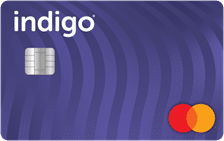 |
 |
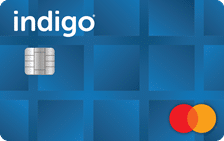 |
Building Credit Benefits
The Indigo Mastercard offers a variable annual fee as a credit card designed to help rebuild damaged credit. However, certain Indigo Card applicants may be eligible for a card with no annual fee, while others may have an annual fee that can go as high as $99 per year.
Successful applicants are granted a starting credit line of $700 regardless of the annual fee. This starting credit limit is considerably higher than the card’s previous offer and is highly competitive in the unsecured, subprime credit card market.
With the Indigo Mastercard, you can build credit with every purchase and on-time payment you make. The best part is that your monthly payments are reported to the three major credit bureaus. This means that you can establish a positive credit history in no time.
You can improve your credit score over time by consistently making on-time payments and using your Indigo Mastercard responsibly. This can open up doors to better interest rates and credit options in the future.
Other Card Benefits
Another notable benefit of the Indigo Mastercard is its online account management tools. You can easily access your account, view your balance, make payments, and track your spending through the Indigo website or mobile app. This level of convenience and control makes it easier to stay on top of your finances and make informed decisions about your credit.
In addition to these features, the Indigo Mastercard also offers fraud protection and zero liability for unauthorized charges. You are not responsible for fraudulent transactions if your card is lost or stolen. This added security feature gives cardholders peace of mind and protects them from potential financial losses.
Comparison
The Destiny Mastercard and Milestone Mastercard are two comparable cards to consider. Here’s how the three cards compare across key features:
Annual Fees
All three cards charge a variable annual fee, but only the Indigo Mastercard provides a no annual fee option for particularly qualified applicants. The annual fee with Indigo ranges from $0 to $99 per year, while both Milestone and Destiny feature an annual fee of $75 for the first year and $49 thereafter, though your particular offer may vary.
Starting Credit Limits
All three cards feature similar credit limits, but the Milestone Mastercard and Destiny Mastercard offer a higher starting credit limit for most applicants. These cards both provide a starting limit of $700, while Indigo provides a starting limit of between $300 and $1,000.
Before choosing your next near-prime credit card, carefully compare all aspects of the cards. Compare the terms and conditions of different credit cards to find one that aligns with your needs. Additionally, take into account any fees associated with each card and consider whether they are worth the benefits provided.
Tips for Building Credit
- Check your credit file: Checking your credit report is crucial for understanding your financial well-being. It helps maintain an accurate credit history, protect against identity theft, and make informed financial decisions. You can ask for a free credit report from a credit-reporting agency every 12 months.
- Keep credit utilization low: Aim to keep your credit card balances well below your credit limit. High credit card utilization can negatively impact your credit score. A general rule is to keep credit utilization below 30% of your credit limit.
- Pay on time: Always pay your bills on time as your payment history significantly influences your credit scores. Late payments can hurt your credit and may result in reduced credit limits or closed accounts.
- Become an authorized user: Being added as an authorized user on someone else’s credit card account can help boost your credit growth. The card’s payment history and credit utilization are often reported on your credit report, potentially boosting your credit score if the primary cardholder manages their credit responsibly.
- Limit new applications: Avoid applying for too many credit cards in a short timeframe. Each application results in a hard inquiry on your credit report, which can temporarily lower your score. Be selective about applying for new credit to protect your credit score.
What We Like About the Indigo® Mastercard® for Less than Perfect Credit
Perhaps the best feature of the Indigo Mastercard is its simplicity. This straightforward card is designed for credit-builders who prefer no nonsense. With this card, you can forget about tracking rewards and bonus categories. While the perks are minimal, the card offers essential protections for loss or theft.
This no-fuss credit card is a great option if you want to establish or improve your credit. By focusing on simplicity, you can avoid the hassle of managing rewards and bonus categories. Plus, with its built-in protection, you can have peace of mind knowing you’re covered in case your card is ever lost or stolen.
Things to Consider
For all the advantages this card has, there are also some drawbacks to be aware of:
Fees
The card also charges several fees, including an annual fee, which you must pay after opening an account. This requirement will reduce your initial credit limit by up to $99, depending on your offer. Once you make the payment, you will receive your full credit line.
FAQs
Anyone who is interested in establishing or rebuilding their credit can apply for the Indigo Mastercard. To be approved, you must:
- Must be at least 18 years old (19 in AL), have a valid social security number, physical address, and a US IP address.
- Not have had an Indigo Mastercard Account that charged off due to delinquency.
- Meet additional credit qualification criteria, including a review of your income and your debt, and identity verification requirements.
The Mastercard Benefits are an additional benefit of the Indigo Mastercard included at no additional charge. These benefits include:
- Mastercard ID Theft Protection™ – Provides thorough identity monitoring covering your social security number, email addresses, debit cards, credit cards, bank accounts, usernames and passwords for web logins, and much more.
- Zero Liability protection – When you use your Mastercard, have peace of mind knowing that you are not held responsible for unauthorized transactions.
- Yes, subject to credit approval, you can use your Indigo Mastercard for cash advances at many financial institutions.
- You can reach customer service for any issues relating to your Indigo Mastercard through the following:
Genesis FS Card Services | PO Box 4477 Beaverton, OR | 97076-4477. Tur toll-free customer service number: 1-866-946-9545
Indigo Mastercard Ratings
How does Concora Credit Inc., the card’s servicer, stack up? Here is a selection of expert reviews for the card:
| BestCards | Better Business Bureau | TrustPilot |
|
4/5 |
|
1.5/5 |
Should You Apply for the Indigo® Mastercard® for Less than Perfect Credit?
Having poor or no credit can be challenging. However, the Indigo card is designed to assist individuals who must establish or restore their credit profile. Approval for the card is based on your credit history. While approval is not guaranteed, there is some good news: Applying for the Indigo card will not result in a hard inquiry on your credit report unless you qualify and are approved.
Furthermore, your account activity is reported to all three major credit bureaus. Cardholders who demonstrate financial responsibility will see their credit score improve over time, making them eligible for other credit card offers.
Overall, the Indigo Mastercard is an excellent choice for those seeking a financial tool to build or enhance their credit profile. Its user-friendly interface, convenient online payment setup, and helpful credit tools make it a strong competitor among similar credit cards.
If you’re looking for a card that caters to individuals with poor credit, the OpenSky® Secured Visa® Credit Card is another option worth considering. It requires no credit check and offers a flexible credit limit, making it accessible to individuals with limited credit history.
Browse Other Card Offers:
Editorial Disclosure – The opinions expressed on BestCards.com's reviews, articles, and all other content on or relating to the website are solely those of the content’s author(s). These opinions do not reflect those of any card issuer or financial institution, and editorial content on our site has not been reviewed or approved by these entities unless noted otherwise. Further, BestCards.com lists credit card offers that are frequently updated with information believed to be accurate to the best of our team's knowledge. However, please review the information provided directly by the credit card issuer or related financial institution for full details.

